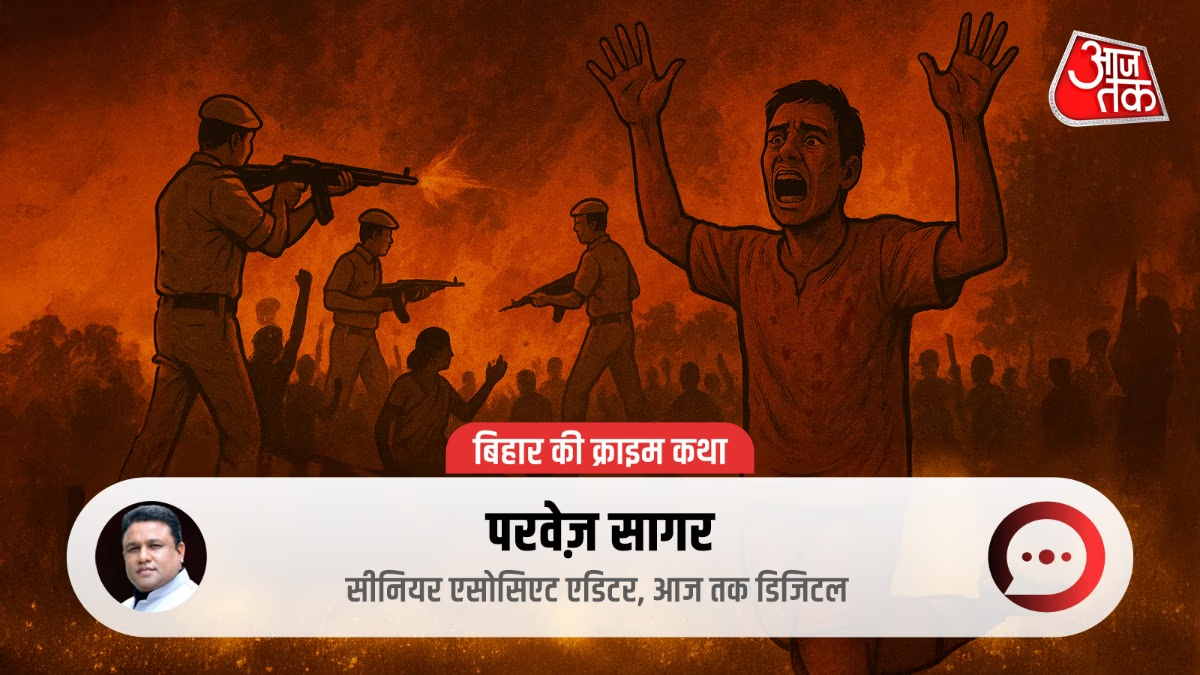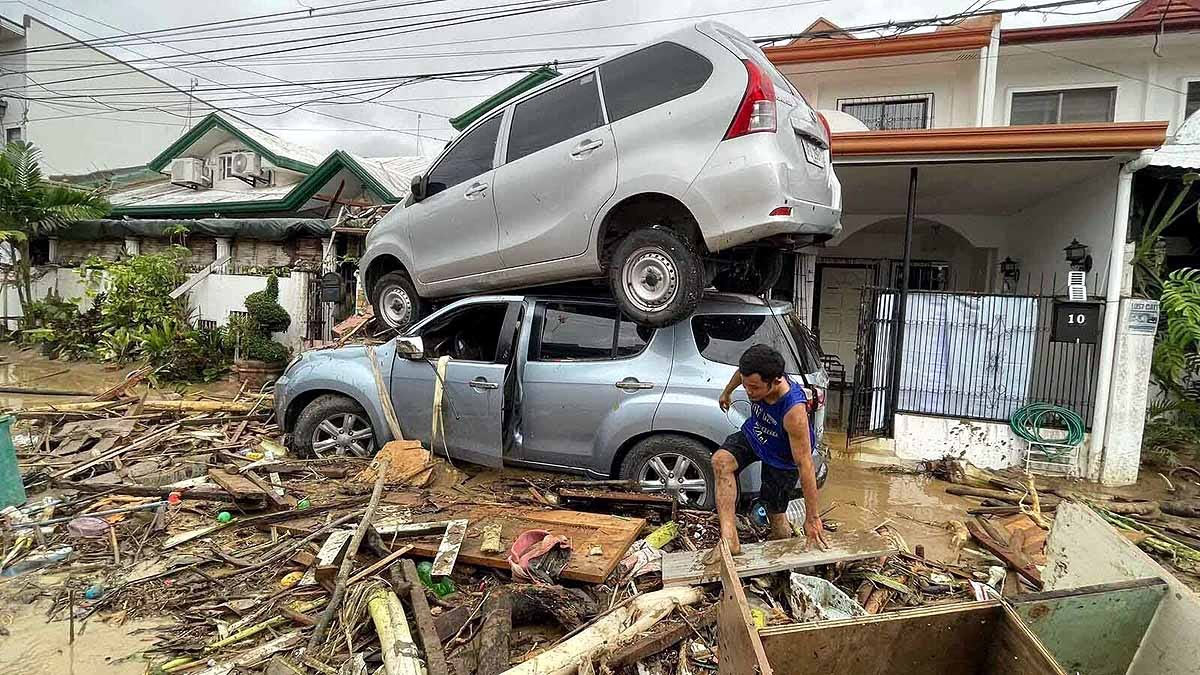Bagaha Custodial Death & Police Firing Case:
Custodial deaths and police brutality in Bihar have long been contentious issues. However, the 1997 Bagaha police firing incident stunned not just Bihar but the entire nation. It began in the Vaishali district where a Dalit youth died under suspicious circumstances while in police custody. A peaceful protest ensued, during which the police unleashed a horrific barrage of gunfire, killing 11 people, including women and children from the Dalit community. This account recounts the entire story of the Bagaha police firing in 'Bihar's Crime Chronicles'.
The Bagaha police firing incident raised critical concerns about police accountability, Dalit persecution, and human rights violations in Bihar's history of custodial violence.
Death of a Dalit Youth in Police Custody
This story is from the year 1997. In a village named Bagaha in Bihar’s Vaishali district, the police detained a Dalit youth over a trivial issue. During interrogation at the police station, he was brutally beaten, leading to his death in custody. This spurred outrage among the villagers, who believed his death was due to police brutality. They began a peaceful demonstration demanding justice for his family.
Brutal Gunfire on Helpless Villagers
As the protest gained momentum, the Dalit community united to demand justice for the bereaved family. However, this did not sit well with the police and possibly the then government. In an attempt to save face, the police officials overreacted, resorting to undue force to suppress the peaceful protest. The situation escalated to a new low when, without provocation, the police opened fire on the innocent demonstrators. The sound of gunfire shattered the calm of Bagaha. Protesters ran frantically to save their lives amidst chaos and screams. Once the firing ceased, grief engulfed the village.
Eleven Lives Lost in Police Firing
The indiscriminate police firing at Bagaha claimed the lives of 11 villagers, including women and children, all from the Dalit community. This incident highlighted social injustice and caste discrimination. Eyewitnesses reported that the police fired indiscriminately without warning, causing many to die on the spot. This event raised serious questions about police procedures as investigations proved the firing was unjustified. Such brutality turned Bagaha into a symbol of Dalit oppression across the nation.
Intervention by the National Human Rights Commission
Recognizing the gravity of the Bagaha incident, the National Human Rights Commission (NHRC) promptly intervened. They formed a special team to investigate, which deemed the police actions inhumane and illegal. NHRC recommended compensation for the victims' families and stringent actions against the culpable officers. Their proactive involvement underlined the role of human rights organizations in cases of custodial violence. However, the slow implementation of their recommendations disheartened the victims' families.
Role of PUCL and Social Organizations
Organizations like the People's Union for Civil Liberties (PUCL) actively engaged after the Bagaha incident. They pushed for an independent investigation and emphasized police reforms. Their report revealed that the police action was not only unwarranted but displayed deep-seated animosity against the Dalit community. PUCL labeled this incident as a clear human rights violation and launched widespread awareness campaigns. These efforts brought the Bagaha incident to national discourse.
Negligence Unearthed in CBI Investigation
Amidst the growing public outcry, the case was handed over to the Central Bureau of Investigation (CBI). Their findings revealed the unjustified nature of the police firing and highlighted the custodial death as a consequence of negligence and brutality. CBI implicated several officers, and some faced consequences, albeit slowly. This sluggish judicial process exposed gaps in the justice system, fueling dissatisfaction among the victims' families.
Slow Pace of Justice
The pursuit of justice in the Bagaha case was painstakingly slow. Despite the CBI investigation and court proceedings, many culpable officers evaded significant punishment for a long time. While families received compensation, their call for harsh sentences for the guilty was left unmet. This delayed justice dampened the path to accountability for custodial violence victims in Bihar. Many families reported that this long legal battle further deteriorated their financial and mental state.
Symbol of Oppression Against Dalits
The Bagaha incident brought the atrocities against Dalits to national and international attention. It underscored not just police violence but also deep-rooted social inequality and caste discrimination. The fact that all deceased were from the Dalit community proved that marginalized groups are more vulnerable to police violence. This event united Dalit organizations and activists, catalyzing a movement for police reforms.
Debate Over Police Reforms
Bagaha sparked a nationwide debate on the necessity of police reforms, not just in Bihar. The incident raised concerns over granting limitless power to the police and emphasized ensuring their accountability. Human rights organizations demanded the inclusion of human rights and social sensitivity in police training. Additionally, they stressed the need for stringent laws and swift investigation processes to curb custodial violence. Bagaha transformed these demands into a resonant national issue.
Other Incidents of Custodial Death in Bihar
Bagaha was not an isolated incident. Bihar witnessed similar events in Belchhi (1977) and Pipra (1980), exposing police and social violence against Dalits. These incidents shed light on social inequality and police high-handedness. In recent years, custodial deaths continue to surface in Bihar, signaling the severity of the problem.
Social and Political Impact
The Bagaha incident had a profound social and political impact. It galvanized the Dalit community to organize and assert their rights. Several political parties incorporated this incident into their agendas, seeking to attract Dalit voters. However, these efforts often served political gain, fostering disillusionment among the victims' families. The event also unified social activists, initiating a broad movement against police brutality.
A Major Human Rights Issue
Globally, the Bagaha incident spotlighted human rights violations in India. International human rights organizations condemned the incident and urged Indian authorities for police reforms. The case questioned how accountability can be ensured in a democratic nation. It symbolized global resistance against custodial violence and the oppression of marginalized communities.
What Changed Over the Years?
Decades on, custodial deaths and police brutality remain a challenge in Bihar. Recent cases still reveal negligence and ruthlessness. Human rights groups argue that without strict laws and changes in police training, such incidents may persist. The Bagaha police firing remains a tragic reminder of police violence, Dalit oppression, and human rights violations in Bihar’s history. It compelled society to reconsider how police and administrative accountability should be ensured.




